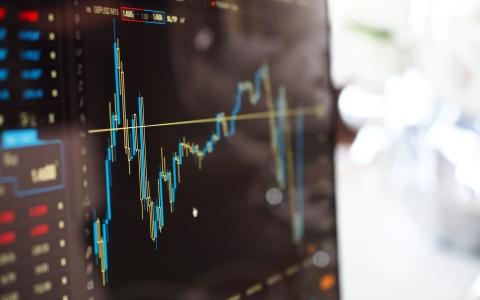
Surging U.S. bond yields and a potentially massive deficit spending program under the incoming Trump administration could ignite a "Liz Truss moment," triggering a sharp stock market downturn.
Torsten Slok, Apollo's chief economist, warns that investors should brace for a scenario reminiscent of 2022, where rising bond yields coincided with declining stock prices. Speaking with Bloomberg, Slok emphasized that the current economic backdrop carries significant risks.
"Rates staying higher for longer create a dynamic similar to 2022, when rising yields pushed stocks lower," Slok explained.
On Tuesday, the 10-year U.S. Treasury yield climbed six basis points, reaching nearly 4.70%—the highest level since April 2024. This surge in bond yields pressured the tech sector, causing the Nasdaq 100 index to drop about 1%.
Slok drew parallels to the U.K. financial crisis in 2022, when then-Prime Minister Liz Truss's aggressive tax cut proposal destabilized bond markets. The chaos nearly toppled U.K. pension funds and contributed to Truss's resignation. Slok sees a potential replay of such a scenario if the Trump administration introduces a combined spending and tax-cut bill, fueling fears of unsustainable deficit spending.
The bond market, already strained by the Federal Reserve's quantitative tightening, soaring Treasury issuances, and a worsening fiscal deficit, may struggle to absorb additional shocks. Slok pointed out that in the past, separate bills addressed border security and tax policies, allowing markets to process them more gradually.
"The prospect of a single, large-scale spending and tax-cut package increases the likelihood of a market reaction similar to the Liz Truss episode," Slok said.
A brewing bond market rebellion underscores these concerns. The 10-year U.S. Treasury yield has climbed 100 basis points even as the Federal Reserve has reduced its benchmark rate by the same amount. This divergence is unusual and signals potential market distress.
"The market is sending a clear message," Slok noted in a Tuesday report. "Understanding why long-term rates are rising while the Fed cuts rates is crucial for investors."
While higher yields can signal economic resilience, they also pose significant risks. Persistent yield increases could undermine market confidence, particularly in the stock market.
Treasury auctions have already become a focal point for fiscal health discussions. Each auction raises questions about fiscal sustainability, a recurring theme in Fed Chair Jay Powell's warnings about the nation's unsustainable fiscal trajectory.
If the Fed responds by raising rates in 2025—a possibility Slok assigns a 40% probability—it would defy investor expectations for at least two rate cuts this year. Such a move could shock markets, especially after the recent rally in tech stocks like Tesla and Nvidia, which boast high valuations.
"A surprise rate hike would disproportionately impact highly valued stocks," Slok said, adding that these names are particularly vulnerable to shifts in interest rates.
Investors need to prepare for the possibility of heightened volatility and recalibrate expectations as economic uncertainties intensify. The interplay between fiscal policy and bond markets may dictate the trajectory of both equity and fixed-income investments in the near term.



